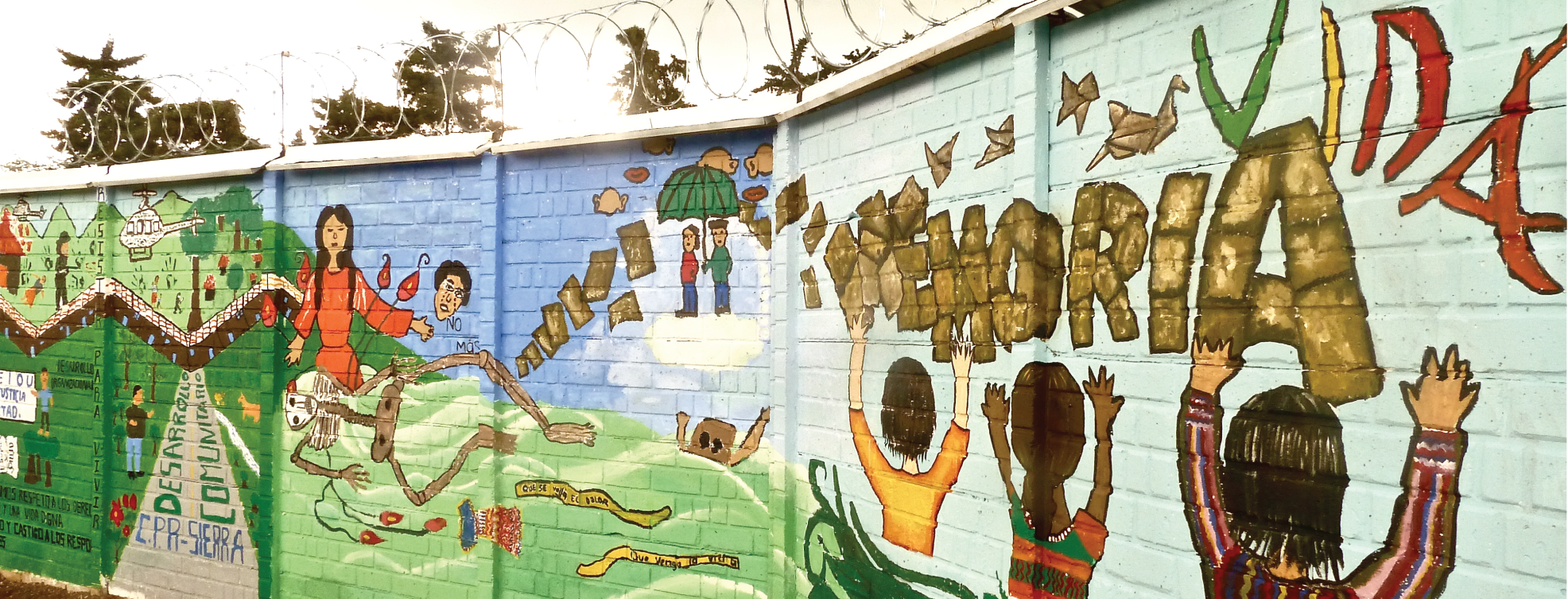Celebrating Ten Years of Data from the AHPN
Ten years ago, in July 2005, human rights officers stumbled upon a nondescript warehouse in a commercial zone of Guatemala City and changed history. They had discovered an archive–its existence kept secret–belonging to the Guatemalan National Police, whose officers committed human rights atrocities on behalf of the government during the civil war.
Inside the building was the bureaucratic detritus typical of a large government agency: 80 million pages detailing shifts worked, tasks assigned, assignments fulfilled, workers’ whereabouts, and who was supervising whom. The documents, which were found stacked on dirty floors, shoved into bags, and tied up in mildewing bundles, provided insight into a security force so incorrigible that it was disbanded by the peace accord that ended the civil war in 1996. With these documents, the Archive supplied clues to the who-what-when-and-where of the wrongful imprisonments, abductions, disappearances, torture, and killings committed by the National Police for 36 years. They would help establish which commanding officers were responsible for which human rights crimes, and, ultimately, result in convictions.
The team working at the Historic Archive of the National Police (AHPN) realized how valuable its contents were, but they worried that the documents would be destroyed or become unavailable. They had an urgent question, and they asked Patrick Ball and HRDAG to help them answer it. The question was this: how can we learn the most about what the Archive has to tell us in less time than it would take to read and record every file?
Patrick, Ann Harrison, and Tamy Guberek visited the Archive in early 2006 and imagined a multi-stage random sample of documents. Soon afterward, Tamy and Daniel Guzmán met with Gary Schapiro and Paul Zador at Westat to formalize the sampling design. In May 2006, Tamy, Daniel, and Romesh Silva went to Guatemala City to conduct the sample, and to implement the data model and coding frame for the study.
People were hired to clean, organize, and classify the documents. Carolina López, who joined the AHPN team in early 2006, was one of them. Over several months, HRDAG selected and trained 20 coders, including Carolina, to select the sample documents and look for specific information relevant to the quantitative research questions, transferring key content from documents into a database. With the HRDAG team, the coders learned about inter-rater reliability, the archival process, sampling, and securing data through Benetech’s Martus program. Carolina has written 7 blogposts about aspects of her work at the AHPN: the first post is here.
Over many years, Patrick Ball and Daniel Guzmán worked on a critical analysis of AHPN documents to establish command responsibility for certain crimes. In September 2013, this analysis helped to convict Colonel Héctor Rafael Bol de la Cruz, a war criminal responsible for the 1984 kidnapping and disappearance of Fernando Garcia, a student union leader. By assessing the flow of thousands of internal police records sent between the director’s office and his subordinate commands, Patrick and Daniel were able to establish the Colonel’s command responsibility and prove that the chain of command was functioning at the time of García’s capture. Colonel Bol de la Cruz was convicted and sentenced to 40 years in prison.
Meanwhile, in 2009 Megan Price joined the HRDAG team and began working closely with Carolina on the sampling and coding. Their goal? To provide a how-to guide, or road map, for any human rights team lucky enough to find themselves with the problem of making sense of millions of pages of documents that could provide clues to war crimes. This year, after years of painstaking work, that project will come to fruition. The result is a comprehensive report describing the collaborative quantitative project–sampling, coding, data analysis, and results–that involves 11 samples and approximately 18,000 documents. It will be published in English and Spanish later this year.
On this tenth anniversary of the discovery of the Archive, we at HRDAG support its continued work, and the work of all human rights teams dedicated to making sure that everybody counts. (The digital archive of the AHPN is maintained online by the University of Texas, Austin.)

